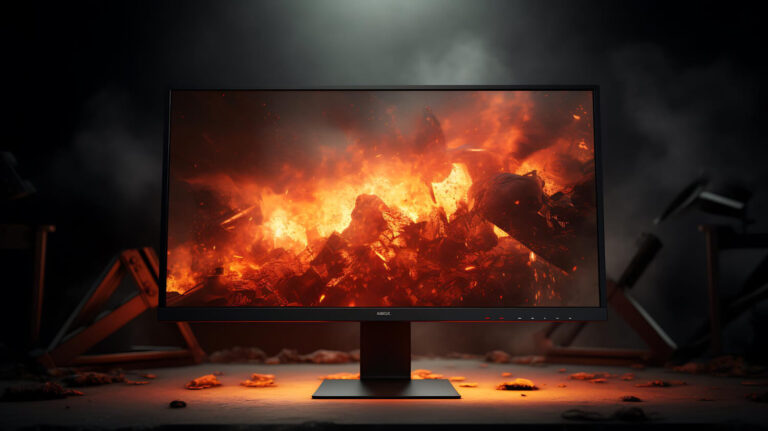Ever stared at your screen and thought, “Why does this look so dim? Or why is it burning my retinas like I just gazed into the sun?” Well, my friend, you’re dealing with monitor brightness. Specifically, the mystical unit of measurement known as nits.
So, how many nits do you actually need? Let’s break it down in a way that won’t make your brain overheat like an old GPU under stress.
What the Heck is a Nit?
First things first: what is a nit? No, it’s not something annoying in your hair. In display terms, a nit (cd/m²) is a unit of brightness, measuring how much light a screen emits per square meter. More nits = a brighter screen. Simple, right?
But before you start hunting for the brightest monitor out there, remember: more isn’t always better. It’s about finding the right brightness for what you do.
How Many Nits Do You Really Need?
Let’s get straight to it. Different use cases require different levels of brightness. Here’s a cheat sheet:
Casual Home & Office Use (200-300 nits)
- If you’re mostly writing emails, browsing the web, or working on documents, you don’t need anything super bright.
- 250 nits is the sweet spot for indoor use.
- Any more than that, and you might just be overpaying for brightness you won’t use.
Gaming & Creative Work (300-600 nits)
- Gamers and content creators need something punchier.
- HDR gaming and video editing? Look for at least 400-600 nits.
- Anything less, and those deep blacks and vibrant colors just won’t pop.
Outdoor & Sunlit Room Use (600+ nits)
- If your workspace is near a bright window (or you like gaming in the sun for some reason), you need a high-nit display.
- 800-1000+ nits are often found on high-end HDR displays and professional monitors.
- If you’re working outside, a super-bright screen is a must unless you enjoy squinting.
Ultra High-End & HDR (1000+ nits)
- TVs, high-end professional monitors, and some laptops (like the latest MacBook Pro) hit over 1000 nits.
- This is where HDR really shines, but let’s be honest… you’re probably not buying a 1000-nit display for writing emails.
When Too Many Nits is a Bad Thing
You might be thinking, “Why not just get the brightest monitor and call it a day?” Good question! Here’s why that’s not always smart:
- Eye Strain – Staring at a 1000-nit screen all day is like keeping your headlights on high beam all the time.
- Battery Drain (Laptops/Tablets) – Brightness eats battery life. Want your laptop to last longer? Turn those nits down.
- Color Accuracy Issues – Extreme brightness can mess with color perception, which is bad news if you’re a designer or photographer.
How to Adjust Your Monitor Brightness Like a Pro
Now that you know how many nits you need, let’s make sure your screen is set up correctly:
- Check Your Current Brightness – Go to your monitor or laptop settings and see if your brightness is too high or too low.
- Use the 120 Rule – In a dim room, aim for around 120 nits. You can test this using online brightness calibration tools.
- Enable Adaptive Brightness (If Needed) – Some monitors and laptops adjust brightness automatically based on lighting conditions. It’s useful if you move around a lot.
- For Gaming/Movies – If you have HDR support, turn it on! But also adjust brightness manually for the best experience.
- Avoid Blinding Yourself at Night – Reduce brightness in dark rooms to avoid unnecessary eye strain.
Final Thoughts: Do You Really Need All the Nits?
So, how many nits do you really need? If you’re working indoors, 250-300 nits is just fine. Gaming or content creation? Go for 400-600 nits. And if you’re using your screen in direct sunlight, 800+ nits is your best friend.
More isn’t always better. It’s about using the right amount for your setup. So, before you splurge on an ultra-bright display, ask yourself: Do I need this, or am I just falling for a spec sheet flex?
If you’ve found this useful, please give it a share as it might help others too!





